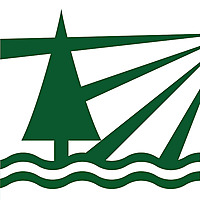Amber Whelsky PhD Defense
Gas Transport through layered snow and firn
Regional climate and weather conditions dictate the microstructural properties of falling snow and influence metamorphosis of the snowpack following deposition. For both the polar and seasonal snow cover, differences in the depositional events and post-depositional processes lead to snow that is both porous and also highly layered. It is within this connected, interstitial porous space of snow’s layers that atmospheric gases are able to move in response to various agents. Part of this thesis focuses on quantifying seasonal snow’s role as a conduit for carbon dioxide respired during the wintertime. Through in situ studies of seasonal snow, this work provides the first measurements of effective gas diffusivity of seasonal snow as a function of crystal type and density. Results of this work provide improved guidance for seasonal snow gas diffusivity estimates to be used in surface-atmosphere gas flux models. Another part of this thesis examines the unexpected effect that permeable layers of firn (old polar snow) have on pressure gradients developed when using air driven, rotating drills in the polar regions. Drilling in areas where regions of highly permeable firn layers are present could be problematic, as results from this project indicate that the pressure differential within the borehole is highly sensitive to the permeability of the surrounding firn, particularly near the drill head.
In the final section we aim to improve knowledge of the impact of heterogeneity of centimeter scale layering on the diffusivity of firn. We present the first recorded comparison of the measured diffusivity of multilayered firn cores to the diffusivity measured on cut subsections of the cores. Initial results show a decrease in diffusivity as a result of cutting, however further investigation is needed to conclude with certainty the cause of the reduction observed. The research presented in this thesis will improve the understanding of gas transport through polar and seasonal snow for both scientific and engineering endeavors.
